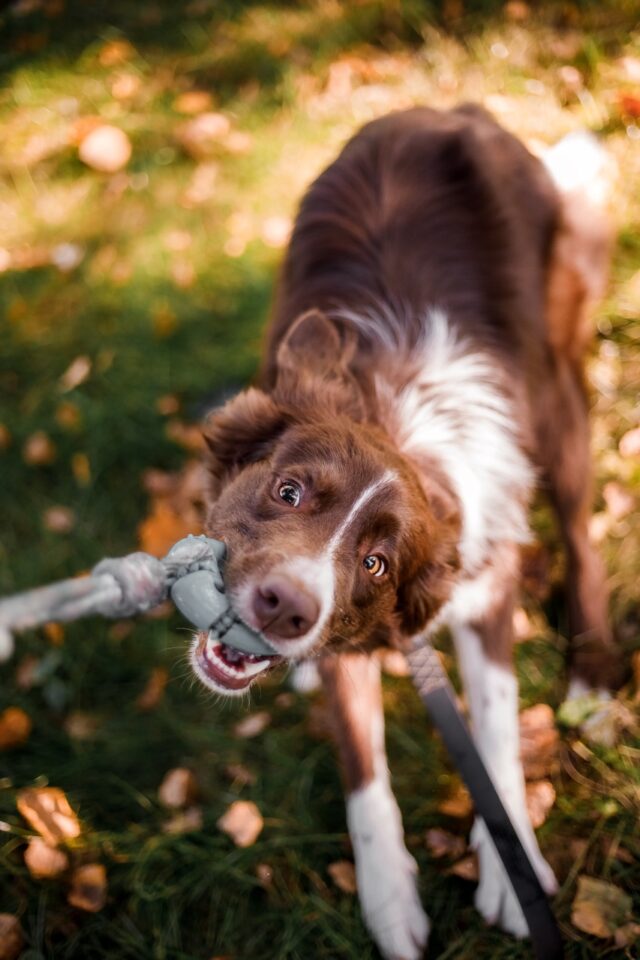Victims of a dog bite may experience profound physical and emotional consequences. As the Centers for Disease Control and Prevention (CDC) highlighted, dog bites account for approximately 18% of all reported injuries in the United States.
This statistic emphasizes the importance of understanding and addressing this issue to ensure public safety and prevent further harm. This article highlights the seriousness of dog bite injuries’ impact on individuals, associated risk factors, and the need for awareness, especially for individuals in Phoenix, Arizona, who are sourcing legal assistance for dog bite injuries.
Breed-Specific Dog Bite Risk Factors
Certain breeds are frequently associated with a higher risk because of their genetics, temperament, or size. Several studies have investigated the role of dog breeds in dog bite accidents. It is critical to appreciate the outcomes of these studies to analyze the effects of dog bite injuries with humans.
In 2019, the American Animal Hospital Association (AAHA) conducted a study that discovered that short, wide head canines ranging between 66 and 100 pounds were the most likely to bite. According to the study, pit bulls had the greatest percentage of recorded bites, at 22.5%, followed by mixed breeds at 21.2%, and German shepherds at 17.8%.
It’s important to note that specific breeds with higher reported bite rates do not necessarily mean that all dogs of those breeds are inherently aggressive. Avoid generalizing based solely on breed and recognize that individual dog behavior can vary greatly, even within the same breed.
The study also discovered that breeds like Great Danes and Akitas had a lower relative risk of biting. It is important to note that these breeds caused higher average damage with their bites. Considering the severity of injuries is important, rather than solely focusing on the frequency of bites. The temperament, training, and environment in which dogs are raised can significantly influence their biting behavior.
Although breed can also contribute, responsible ownership practices, proper socialization, and training are vital in preventing dog bites. Educating dog owners about responsible ownership and promoting positive training methods can mitigate the risk of dog bites in all breeds.
Impact of Socialization and Training
During puppyhood, proper socialization and obedience training dramatically lower the chance of dog aggression. This procedure teaches dogs to navigate difficult situations and reduces their perception of potential risks. Early exposure to owners and home situations before eight weeks significantly reduces aggression in dogs later in life.
However, constant training and socializing efforts are required to preserve positive conduct. Owners must train their dogs for at least 10 minutes daily for effective social needs and behaviors. Here are some helpful suggestions for socializing an aggressive dog:
- Keep yourself calm when socializing with an aggressive dog. Dogs pick up on human emotions; your calm approach can create a pleasant environment.
- If your dog becomes reactive or violent while encountering other dogs, consider utilizing physical obstacles to restrict their views, such as a fence or a strong object. It aids in lowering their excitement and preventing unwanted reactions.
- Choose a neutral place where neither dog feels possessive when introducing your aggressive dog to other dogs. This neutral environment helps to reduce possible conflict and foster a more favorable encounter.
- Diverting your dog’s focus away from potential triggers and redirecting its energy toward happy experiences will help. Mental and physical stimulation through games, toys, and exercise can help children develop a more balanced and less aggressive disposition.
- Having your dog on a leash in outdoor or public settings is critical for greater management. Train your dog wearing a muzzle as an added precaution, protecting the safety of others while letting your dog explore the world without endangering himself.
- A positive relationship with your dog is vital for preventing aggression. Reward favorable actions consistently, utilize appropriate physical control devices when necessary, and avoid punishment. Regain control of your dog’s resources and reinforcers to teach them what is desirable and reinforce positive behavior.
Following these guidelines and employing consistent socialization and training strategies will help socialize an aggressive dog and lessen the possibility of aggressive behavior.
Environmental Factors and Dog Bites
The qualities of the home environment have a major influence on dog bite occurrences, particularly those involving families that have children.
A study published in Frontiers discovered that the likelihood of a dog bite on a family child is correlated with parameters relating to the child, the dog, and the child-dog habitat. Another study published in Injury Epidemiology attempted to offer current statistics on the accidents of dog bites in the United States and New York for 2018; there were 344,201 nonfatal injuries treated in emergency departments (EDs) due to dog bites.
This report shows the considerable impact of dog bites on public health and the importance of effective prevention strategies. Studying the impact of environmental factors on dog bites is critical for designing ways to prevent such instances. Some of the factors are:
Lack of Supervision:
Unsupervised interactions between dogs and humans, especially children, can increase the risk of dog bites. Lack of supervision may result in misunderstandings or the potential triggering of aggressive behaviors in dogs. Dog owners must closely monitor their dog’s interactions with others, particularly in unfamiliar situations or around vulnerable individuals.
Inadequate Fencing and Containment:
Insufficient fencing or containment systems can allow dogs to wander freely and potentially encounter unfamiliar individuals or animals, leading to possible conflicts and bite incidents. Dog owners must ensure their property has secure and appropriate fencing to prevent dogs from escaping and potentially causing harm.
Territorial Behavior:
Dogs can exhibit protective and territorial behaviors, especially within their home environments.
Visitors, delivery personnel, or strangers entering a dog’s perceived territory may trigger defensive responses that can escalate into aggressive behavior. Owners should manage and mitigate these situations by properly introducing their dogs to new people and providing clear guidance and supervision.
Lack of Socialization and Training:
Dogs not adequately socialized and trained may exhibit fearful or anxious behaviors in unfamiliar situations.
These emotions can escalate into aggression as a defensive response. Proper socialization and training can help dogs become more confident, less fearful, and better equipped to handle various environments and interactions.
Neglect and Abuse:
Dogs who have experienced neglect or abuse are likelier to display aggressive behaviors.
Traumatic experiences can result in fear, anxiety, and a heightened fight-or-flight response, increasing the risk of bites. Addressing the underlying trauma through professional intervention and providing a secure, nurturing environment can help mitigate aggressive tendencies.
Unhealthy Living Conditions:
Dogs living in unsanitary, overcrowded, or stressful environments may experience heightened stress and anxiety.
These conditions can contribute to the development of aggressive behaviors. Ensuring dogs have access to proper shelter, nutrition, and care and a supportive and enriching environment can reduce the likelihood of aggression.

Age and Gender Influence
According to Gary J. Patronek’s research, age substantially influences the risk of dog bite injuries.
According to the study, children between the ages of 5 and 9 are 2.7 times more likely to experience a dog bite injury than individuals 65 and older. Similarly, patients aged 10 to 14 have a 2.3 times higher likelihood of sustaining such injuries.
These findings highlight the heightened vulnerability of children in these age groups to dog bites. Their smaller stature, developing an understanding of dog behavior, and potential interactions with unfamiliar dogs contribute to the increased risk.
To minimize dog bite accidents and maintain children’s safety, parents, caregivers, and educators must provide age-appropriate knowledge, closely supervise children, and educate them on how to interact safely with dogs.
Additionally, gender influences dog bite risk, with males having a higher likelihood of experiencing dog bites than females. Understanding these age and gender dynamics helps implement targeted prevention strategies such as age-appropriate education, close supervision of children, and promoting safe interactions with dogs for both males and females.
Age-Related Bite Incidents:
| Age Group | Relative Risk of Dog Bite Injury |
| 0-4 years | High risk |
| 5-9 years | 2.7 times more likely |
| 10-14 years | 2.3 times more likely |
| 15-19 years | Moderate risk |
| 20+ years | Lower risk |
Understanding Canine Fear and Anxiety
You will notice when dogs experience fear or anxiety, their behavior becomes defensive or reactive, leading to aggression. Understanding this connection is essential for effectively managing canine anxiety and preventing such incidents. Let’s explore this further:
Fear-Related Aggression in Dogs:
Fear-related aggression occurs when a dog senses a threat or feels unsafe, resulting in an aggressive response. Dogs show warning signs such as growling, snarling, baring teeth, lunging, or biting. Recognize these signals as signs of fear or anxiety rather than natural aggressiveness.
The Role of Fear and Anxiety:
Fear and anxiety arise from various sources, including previous traumatic experiences, lack of socialization, genetic predisposition, or environmental stressors. Dogs exhibit fear or anxiety in certain situations, such as meeting strange people, animals, or places.
These emotions become more intense with age, potentially leading to aggressive conduct if you do not treat them effectively. Hence, early socialization is essential for the development of dogs, just as it is for humans. Otherwise, it becomes their nature, which isn’t easy to address when they become adults.
Contributing Factors:
Several factors contribute to the development or escalation of fear-related aggression in dogs.
These factors include inadequate socialization during critical developmental periods, punishment-based training methods, neglect or abuse, inconsistent or inappropriate handling, and genetic predispositions. It’s important to note that fear aggression is a complex issue, and each dog’s behavior should be assessed individually.
Managing Canine Anxiety:
Addressing canine anxiety and creating a supportive environment for the dog’s development is necessary. Here are some strategies:
- Positive Reinforcement: Utilize positive reinforcement training methods, rewarding desirable behaviors to build trust and confidence in your dog. Avoid punitive measures that may exacerbate fear or anxiety.
- Counterconditioning and Desensitization: Gradually expose your dog to fear-inducing stimuli in a controlled manner, associating positive experiences and rewards. This process helps change the dog’s emotional response and reduces anxiety triggers.
- Professional Guidance: Seek advice from a qualified veterinarian or a certified dog behaviorist. They can assess your dog’s specific needs, develop a behavior modification plan, and provide guidance on anxiety management techniques.
- Environmental Management: Create a calm and secure environment for your dog, minimizing exposure to known triggers. Use tools like crates, gates, or muzzles when necessary for safety, but never as a substitute for proper training.
- Consistency and Patience: Consistency is key in managing anxiety. Establish a routine that promotes stability, reinforces positive behaviors consistently, and be patient throughout the process. Anxiety management takes time and requires ongoing commitment.
Understanding the elements contributing to dog attacks is critical for reducing accidents and fostering safer interactions.
We can create safer communities where humans and dogs can thrive by recognizing the seriousness of dog bite incidents, considering dog breeds, emphasizing socialization and training, addressing environmental factors, acknowledging age and gender influences, recognizing warning signs of aggression, and prioritizing responsible ownership.
Remember to obtain legal counsel if a dog has bitten you or someone you know to preserve your rights and seek proper compensation.
You can get legal assistance from The Sorenson Law Firm, an excellent resource with over 40 years of combined experience specializing in animal injury cases in Arizona. Our team of skilled attorneys can offer tailored guidance and unwavering support throughout the legal process. Together, we can promote a culture of safety and responsible dog ownership.








